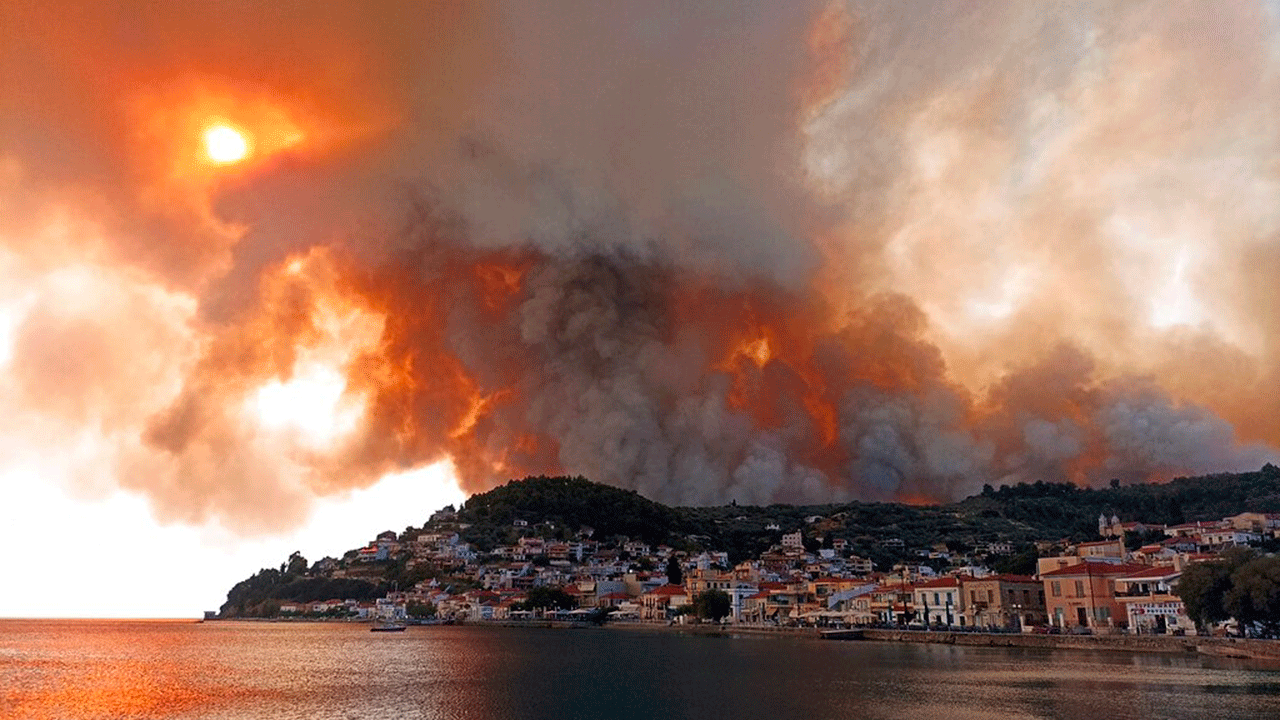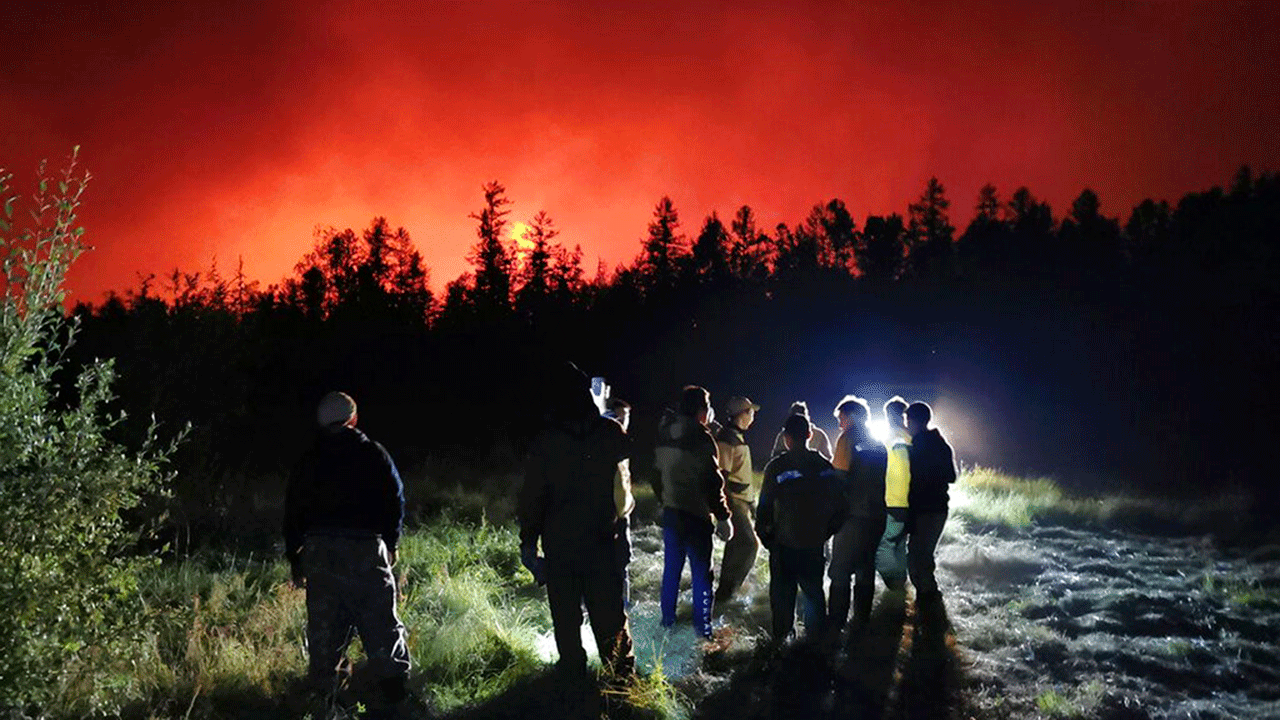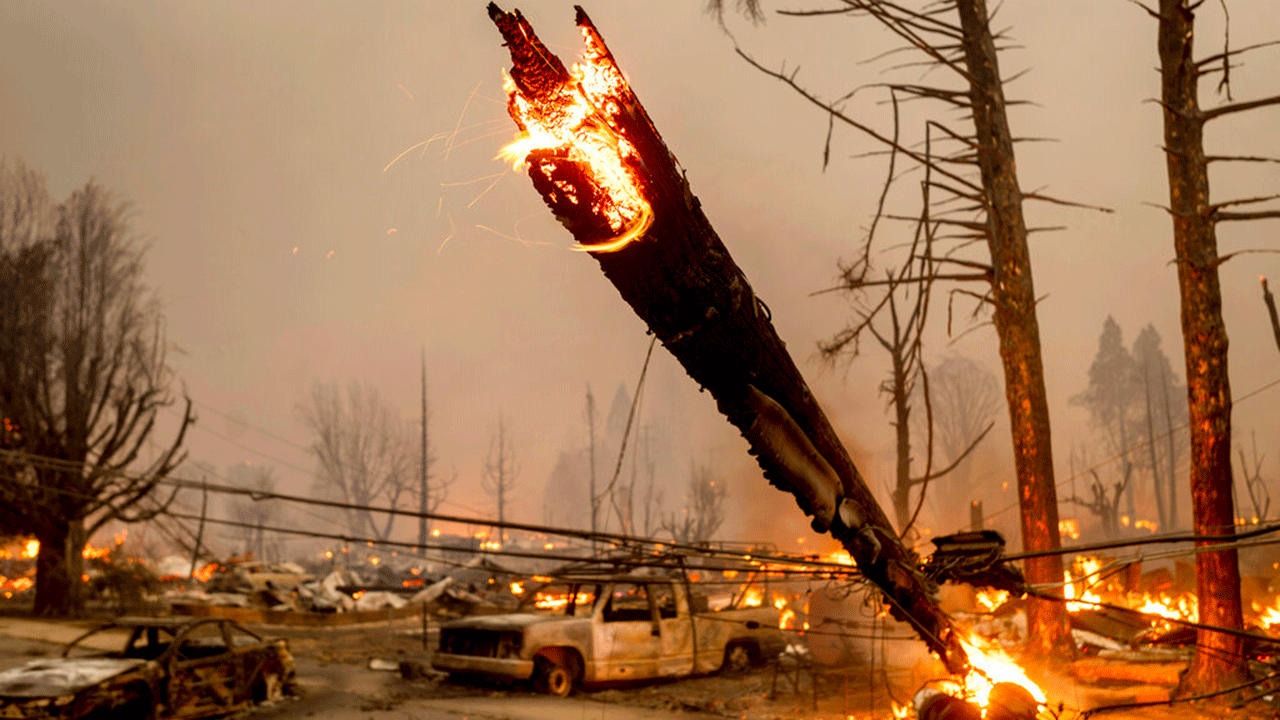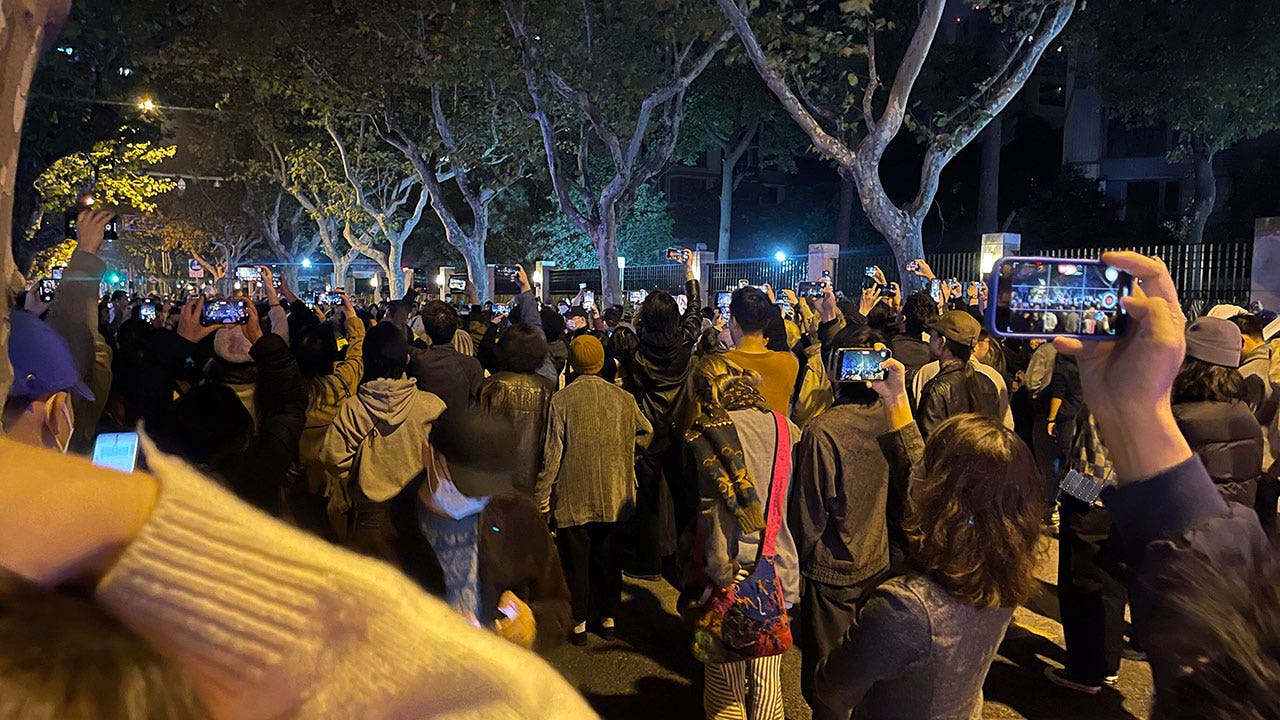Researchers report that last month was the worst July for disasters around the worlda> since at least the year 2003.<
“This stands out by a clear margin,” Mark Parrington, a senior scientist for the service, told the outlet on Friday. “The July global total this year is the highest since our records began in 2003.”
While The Guardian notes that more than half of that number was the result of wildfires in North America and Siberia, the Mediterranean has seen wildfire activity on an astonishing scale.

Flames burn on the mountain near Limni village on the island of Evia, about 160 kilometers (100 miles) north of Athens, Greece, Tuesday, Aug. 3, 2021. Greece Tuesday grappled with the worst heatwave in decades that strained the national power supply and fueled wildfires near Athens and elsewhere in southern Greece. As the heat wave scorching the eastern Mediterranean intensified, temperatures reached 42 degrees Celsius (107.6 Fahrenheit) in parts of the Greek capital.
(AP Photo/Michael Pappas)
In Greece, wildfires continued to threaten homes, businesses and environment amidst the country’s worst heat wavea> in three decades. < Friday on suspicion of starting fires – in two cases intentionally.
In nearby Turkey, hundreds of fires that have been labeled the worst in decades have swept across the southern coast, killing eight people and forcing the evacuations of tens of thousands.

Firefighters and volunteers have a briefing as they work at the scene of forest fire at Gorny Ulus area west of Yakutsk, in Russia, Saturday, Aug. 7, 2021. Wildfires in Russia’s vast Siberia region endangered several villages Saturday and prompted authorities to evacuate residents of some areas. In northeastern Siberia, 93 active forest fires burned across 1.1 million hectares (2.8 million acres) of Sakha-Yakutia, officials said, making it the worst affected region of Russia.
(AP Photo/Ivan Nikiforov)
Massive fires have also been burning across Siberia in Russia’s north for weeks, endangering several villages on Saturday and prompting evacuations there.
In Siberia’s northeast, 93 active forest fires have burned across 2.8 million acres of Sakha-Yakutia; sweltering temperatures lasting weeks have stoked the fires there as well.
world-regions officials have pinned the number of large fires burning on environment and Russia has recorded high temperatures that many scientists believe are a direct result of the issue – though experts also blame a 2007 decision to disband a federal aviation network tasked to spot and combat fires.
CALIFORNIA’S DIXIE FIRE LEAVES 8 PEOPLE MISSING AFTER 16 LOCATED, SHERIFF SAYS
The U.S., which has also seen disasters and crippling disasters this summer, is in similar circumstances and the National Interagency Fire Center reported Friday that 107 large fires have burned more than 2 million acres across the West.
More than 23,700 wildland firefighters and support personnel are working to put out those blazes but wildfire season is far from over in many parts of the world.

A utility pole burns as the Dixie Fire tears through the Greenville community of Plumas County, Calif., on Wednesday, Aug. 4, 2021. The fire leveled multiple historic buildings and dozens of homes in central Greenville.
(AP Photo/Noah Berger)
This weekend, residents of the state of California are on edge after the Dixie Fire – the largest current wildland blaze in the nation and the third-largest in recorded state history – incinerated much of the gold rush-era town of Greenville and menaced thousands of homes in the northern Sierra Nevada.
The Plumas County Sheriff’s Office told Sacramento’s FOX 40 that at least eight area residents were unaccounted for in the fire.
CLICK HERE TO GET THE FOX NEWS APP
The state is on track to surpass last year’s fire season: the worst in recent recorded history with more than 4 million acres burned.
The National Weather Service said Saturday that while the Northwest is expected to see wet and cooler conditions, above normal temperatures will be observed “from California and the Southwest to the central Plains and into New England” with elevated fire weather conditions issued Saturday for the northern High Plains on Montana and the northern Great Basin on Sunday.
The Associated Press contributed to this report.
 Iktodaypk Latest international news, sport and comment
Iktodaypk Latest international news, sport and comment






